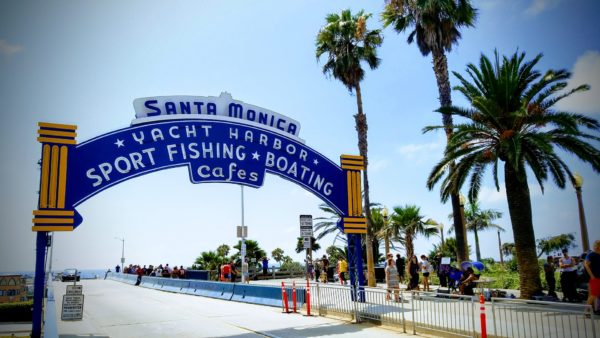In the 1950s and 1960s, two distinct communities of Santa Monica, California –Pico and Belmar Triangle–were filled with Black families. Over time, an estimated 600 of these residents were displaced by several urban renewal projects, including highways and other construction projects such as the Santa Monica Civic Auditorium. Santa Monica is a city west of downtown Los Angeles.

The demographics of the area changed, and today the largest Santa Monica racial/ethnic groups are white (65.1 percent) followed by Hispanic (14.5 percent) and Asian (9.0 percent). Blacks make up 4.48 percent of the area’s population. Blacks were displaced from the neighborhoods they once dominated.
Santa Monica has decided to begin offering priority placements in affordable housing programs to families and their descendants who were displaced by these urban renewal projects. Children and grandchildren of those impacted by these urban renewal projects are eligible to participate in the program. By providing families and their descendants priority placements, the city hopes to right past wrongs against Black residents while also serving as a model for other cities that displaced residents for large construction projects.
“The city of Santa Monica is eager to share the new affordable housing priority for historically displaced households with families who were displaced from Santa Monica in the 1950s,” Constance Farrell, the public information officer for the city of Santa Monica, recently told ABC News. “We encourage our former residents and their descendants to learn more about the program and we look forward to working with you to access this new opportunity.”
This pilot program will offer city-funded housing in residential developments with affordable rents for income-qualifying residents. The applications will open on Jan. 18.
Some descendants who could benefit from this gesture look back at what their families lost. Nichelle Monroe, whose family roots run deep in Santa Monica — it is said her great uncle was the first Black baby born in the city, and her grandfather, Vernon Brunson was an architect who designed several buildings in Santa Monica — describes the displacement as painful. In fact, the Brunson family was a prominent Black family in Santa Monica starting in the early 1900s.
“If you had something and you lost it due to eminent domain, due to racism, you’re thinking about it and it affects your every move thereafter,” Monroe told The Los Angeles Times. “It’s almost like PTSD. It affects how you think of yourself in society, what you believe is possible in that society.”
The Pico neighborhood was a tightly-knit community and its residents were devastated by the loss. Historians note that the local NAACP pleaded with the city to find an alternative at the time of development. And when the bulldozers came, residents tried to block them. Even more devastating was that residents received nothing but the order to move. Property owners, however, received some payment for their land. However, considering the value of Santa Monica’s coastal property, even the landlords and their descendants lost the opportunity to reap the benefits of generational wealth.
“That was our little community,” Evelyn Whitaker, who was a teenager when the building of the freeway destroyed her mother and grandmother’s homes, said to the L.A. Times. “It was only grand because we made it grand. With our friends and our family and the people we loved.”




